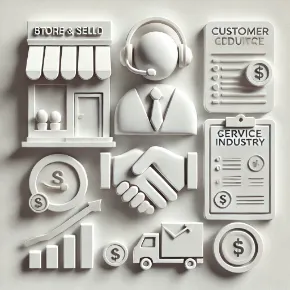Global Trade Faces New Challenges Amid Tariff Changes (March 17, 2025)
Welcome to your daily update on shop.a.land, where we delve into the latest developments in import/export trends, B2B opportunities, and dropshipping strategies across the GCC, USA, and European markets.
Market Highlights
3.1 New Developments
U.S. Steel and Aluminum Tariffs: On March 12, 2025, the U.S. imposed a 25% tariff on all steel and aluminum imports, aiming to bolster domestic production.
EU's Reciprocal Trade Measures: The European Union is considering import restrictions on certain food products produced under standards differing from EU norms, mirroring the U.S.'s previous trade policies.
3.2 Why This Matters
Impact on Global Supply Chains: The U.S. tariffs may disrupt existing supply chains, especially for businesses importing steel and aluminum from affected countries.
EU Market Access: The EU's potential import restrictions could affect exporters whose products don't meet EU standards, leading to reduced market access.
3.3 Actionable Suggestions
Diversify Supply Sources: Businesses reliant on U.S. imports of steel and aluminum should explore suppliers from non-affected countries to mitigate tariff impacts.
Ensure Compliance with EU Standards: Exporters targeting the EU market should review and adjust their products to comply with EU regulations to maintain market access.
Business & Financial Overview
4.1 Market Indicators
Currency Fluctuations: The U.S. dollar's strength against major currencies may increase costs for importers but offer opportunities for exporters due to favorable exchange rates.
Trade Volume Shifts: Recent tariff implementations have led to shifts in trade volumes, with some regions experiencing declines while others see growth as businesses adjust to new trade barriers.
4.2 Bulk Buyer Perspective
Strategic Sourcing: Bulk buyers are reassessing sourcing strategies in light of new tariffs, seeking suppliers in countries not subject to U.S. tariffs to maintain cost-effectiveness.
Inventory Management: Adjusting inventory levels and procurement plans is crucial to navigate the uncertainties introduced by recent trade policy changes.
4.3 Expert Quote
"According to trade policy experts, 'Navigating the evolving tariff landscape requires agility and strategic foresight to mitigate risks and seize emerging opportunities.'"
B2B Collaboration & Dropshipping Tips
5.1 Best Practices for Cross-Border Deals
Stay Informed on Policy Changes: Regularly monitor trade policy updates to anticipate and adapt to changes that could affect cross-border transactions.
Engage with Trade Experts: Collaborate with trade consultants to understand the implications of new tariffs and develop strategies to mitigate potential negative impacts.
5.2 Product Spotlights & Trends
Sustainable Products: There's a growing demand for eco-friendly products in European markets, presenting opportunities for businesses offering sustainable goods.
Tech Gadgets: Increased interest in the latest tech gadgets offers avenues for dropshippers to capitalize on trending products.
5.3 Logistics & Fulfillment
Flexible Shipping Solutions: Partnering with logistics providers offering flexible shipping options can help businesses adapt to changing trade routes and regulations.
Localized Warehousing: Establishing warehouses in key markets can reduce shipping times and costs, enhancing customer satisfaction.
Key Takeaways & Contact
The recent tariff implementations by the U.S. and the EU's consideration of reciprocal trade measures are reshaping the global trade environment. Staying informed and agile is essential for businesses to navigate these changes effectively. Need personalized guidance? Contact us at info@shop.a.land.
Teaser for Tomorrow
Tomorrow, we'll explore strategies for leveraging free trade agreements to enhance your international business operations.






































